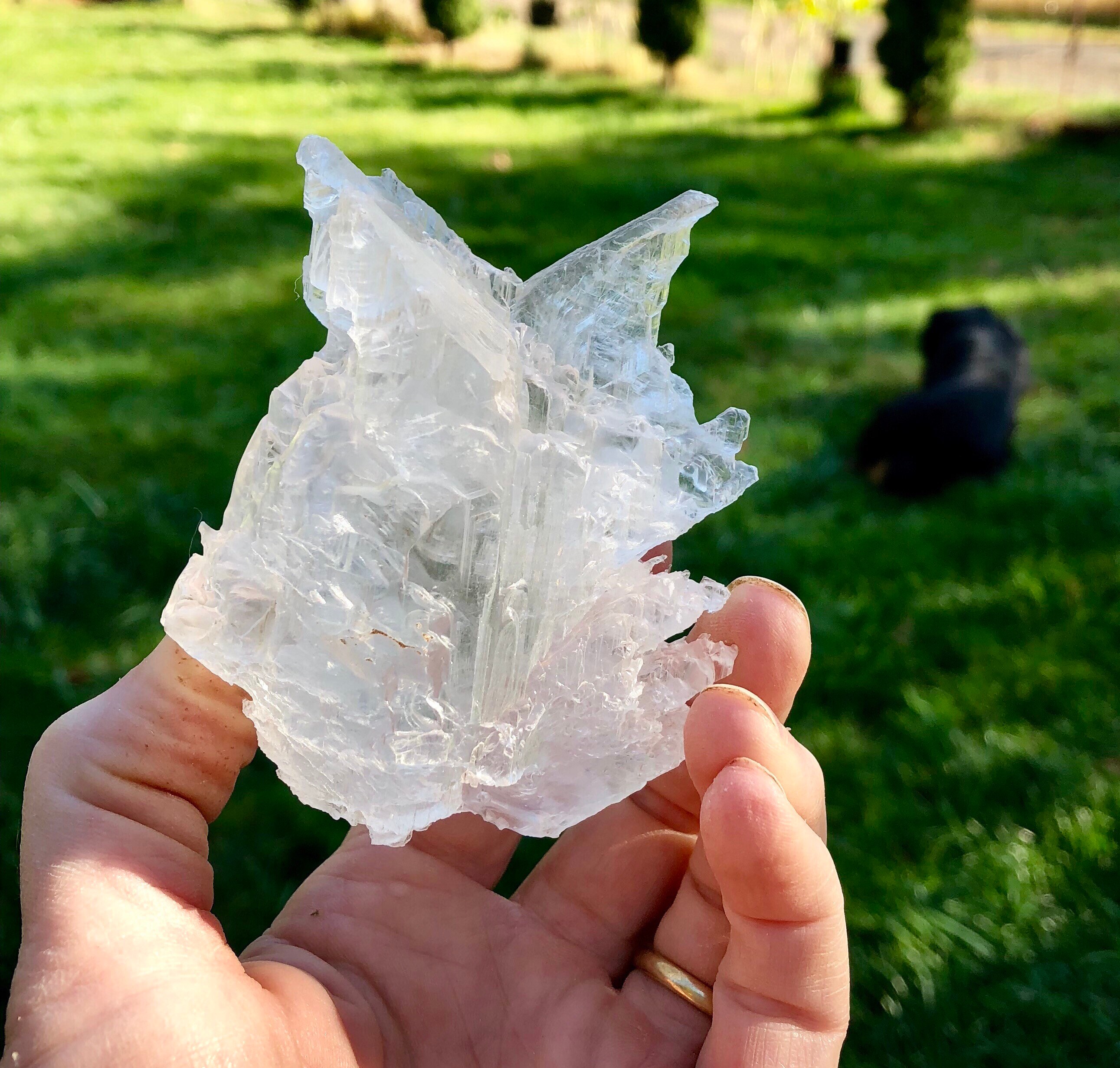

The place was so humid that a visitor who lingered too long risked having fluids condense inside his or her lungs. Not only did the air temperature climb as high as 113 degrees Fahrenheit (47.1 degrees Celsius), but the humidity levels were also close to 100 percent. It soon became clear that Giant Crystal Cave was an inhospitable place. Brothers Pedro and Juan Sanchez - two miners with the organization - became the first people to lay eyes on its crystals when they entered the drying cave on foot.
#CRYSTAL MAKER IMAGE FOR GYPSUM FULL#
The water was pumped out by the Peñoles Mining Company before anyone realized that it was full of gargantuan selenite columns. Giant Crystal Cave itself wasn't found until the year 2000. This put a cap on how large its selenite spikes could get.

However, the Cave of Swords apparently cooled down at a much faster rate. They probably formed in the same way the bigger crystals down below formed. But these were significantly smaller, only about 8.2 feet (2.5 meters) long at the most. Much like Giant Crystal Cave, the chamber - dubbed " The Cave of Swords" - was lined with selenite crystals. One day in 1910, the Peñoles Mining Company discovered a wondrous cave just 394 feet (120 meters) below the surface. Before long, troves of lead, zinc and gold turned up as well - and by the mid-19th century, the first mining operations broke ground along the slopes. In 1794, prospectors discovered silver on the Sierra de Naica Mountain. The very largest, meanwhile, are up to 36 feet (11 meters) long and 3.2 feet (1 meter) thick. Many are 13.1 to 19.6 feet ( 4 to 6 meters) in length. Nevertheless, over time, a lot of these things attained breathtaking sizes. A 2011 study argued that, under the conditions that were available in this cave, it would've taken anywhere from 500,000 to 900,000 years to grow a selenite crystal measuring 3.2 feet (1 meter) in diameter.

Granted, the crystals didn't turn into giants overnight. Because the crystals remained underwater - and because the water temperature stayed within a few degrees of 136 degrees Fahrenheit (58 degrees Celsius) - they were able to keep growing continuously. White-tinted selenite crystals took over the cave. The particles slowly began recombining into a kind of gypsum known as selenite. After that happened, the anhydrate started breaking down, filling the water with calcium and sulfate. Eventually, however, the H2O's temperature dipped slightly below 136 degrees Fahrenheit (58 degrees Celsius). The magma underneath Giant Crystal Cave kept the water in the cave nice and hot. (That's a reversible transformation, by the way.) But at lower temperatures, the mineral is liable to dissolve and then reform as gypsum. Now at temperatures of 136 degrees Fahrenheit ( 58 degrees Celsius) or more, anhydrite remains stable.

This intrusive water contained the mineral anhydrite. The water was originally driven upward into the opening by a magma chamber that's located deeper in the Earth. Roughly 98 feet (30 meters) long by 33 feet (10 meters) wide, it was filled with groundwater for tens of thousands of years. Giant Crystal Cave is a U-shaped cavity in the limestone below the Sierra de Naica. Ultimately, that process led to the mountain's formation. About 26 million years ago, magma started pushing its way toward the Earth's surface through those faults. The acquisition is expected to close by December 2012.Regional fault lines pass right under the Sierra de Naica Mountain. In September 2012 Eagle entered into a definitive agreement with Lafarge North America to purchase Lafarge's Sugar Creek, Missouri and Tulsa, Oklahoma cement plants, as well as related assets, for its cement business. Wallboard sales volumes increased by 24% to 500MMSF from 403MMSF. Operating earnings increased to US$16.5m from a loss of US$2.54m in the same quarter in 2011. Revenue for the Gypsum Wallboard business increased by 34% to US$77.3m from US$51m. The North American building materials producer's Gypsum Wallboard business benefited in the quarter from higher wallboard average net sales prices and higher gypsum wallboard sales volumes. Eagle also reported a rise in net earnings of 66% to US$18m in the second quarter of 2012 from US$6.03m in 2011. Previously the company reported $135m for the same period in 2011. US: Eagle Materials has reported a rise in revenue of 22% to US$165m for the quarter that ended on 30 September 2012.


 0 kommentar(er)
0 kommentar(er)
